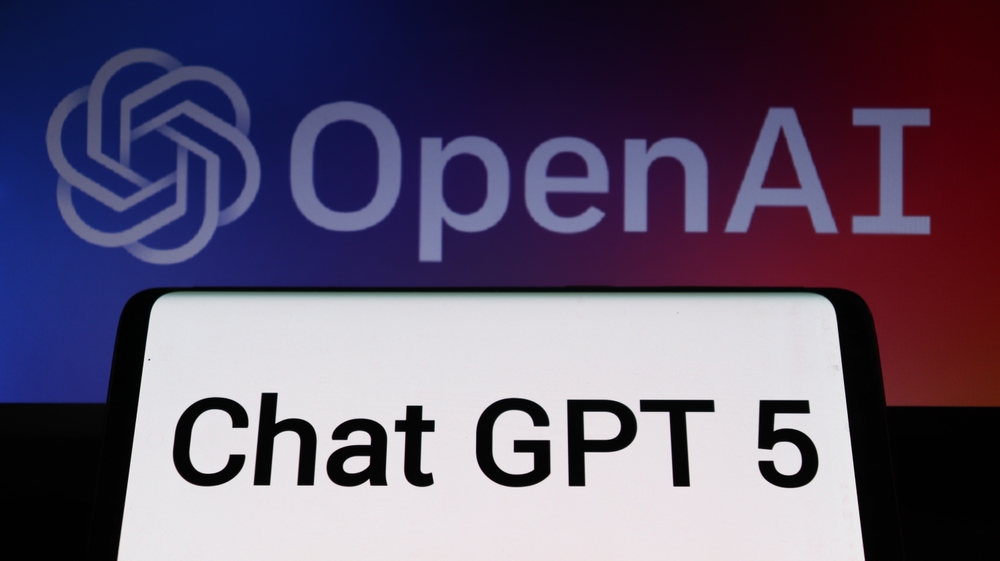In March 2023, OpenAI released GPT-4, the latest iteration of the technology driving services like ChatGPT (hence why, if you see the phrase “ChatGPT-5” around, it’s a misnomer).
GPT-4, according to OpenAI, exhibits “human-level performance” on various academic and professional benchmarks, including the ability to pass a simulated bar exam within the top 10% of students.
It’s important to remember, before we continue, that referring to GPT as “AI” is something of a fallacy. GPT, which stands for “generative pre-trained transformer”, is a large language model, which, as Big Think points out, is essentially a “very sophisticated form of auto-complete” rather than true artificial intelligence.
Still, GPT is pretty impressive when filtered through the lens of tech like ChatGPT, and so the next logical thing to wonder is thus: what exactly will GPT-5 look like? When is it coming out, and what do we know about it so far? Here’s our breakdown on all things GPT-5.
GPT-5 isn’t coming for quite some time
Perhaps the most important thing to know about GPT-5 is that it’s going to be some time before you get to see it.
According to OpenAI CEO Sam Altman, who was recently asked about the problems with AI at an MIT event, OpenAI is currently not training any kind of GPT-5, and “won’t for some time”.
As such, it’s impossible to arrive at any kind of meaningful speculation regarding a potential GPT-5 release date, because the company that makes it appears to be adamant that it isn’t currently in the works.
That might not mean much
Although GPT-5 isn’t coming for a while, that doesn’t necessarily mean a lot in the context of what GPT is and what it does.
As pointed out in the above-linked Verge article, version numbers aren’t a particularly helpful metric by which to judge the capabilities of GPT.
After all, OpenAI will continue to build and iterate on its technology, meaning that GPT-4 is likely to end up vastly more powerful than it started by the time OpenAI is “done” with its development.
In addition, let’s not forget that GPT-3.5 was released prior to GPT-4, so there’s every chance that if a significant leap forward is made, we might end up with GPT-4.5 before we ever get to GPT-5.
Again, though, it’s important to keep in mind that applying traditional version number logic to GPT-5 isn’t a very helpful way to look at things. GPT-4 could well end up just as powerful as you’re imagining GPT-5 might be.
Are there any rumours about GPT-5?
Of course, despite the aforementioned cautions and warnings, the rumour mill is abuzz with talk about what GPT-5 could do and what it could be.
Runway CEO Siqi Chen, for instance, stated on Twitter earlier this year that he’s “been told” GPT-5 is scheduled to finish training in December, and that “OpenAI expects it to achieve AGI”.
AGI, in case you’re wondering, refers to “artificial general intelligence”, which is a state wherein a potential artificial intelligence could theoretically achieve any task of which a human is capable.
In his ensuing Twitter thread, Chen goes on to say that we are “SO much closer than people think” to an AI that’s capable of this feat.
It’s worth remembering that this thread seems to partially be what inspired Altman to make his comments at the MIT event in April, so it’s possible that Altman and OpenAI have effectively debunked what Chen has said.
Naturally, there are plenty of other rumours flying around, but given Altman’s comments about where GPT-5 currently stands, it seems like most of them may well not be grounded in truth.
Altman’s comments were very definitive; often, CEOs and businesspeople will play coy when asked direct questions, but Altman appears to have made it clear that GPT-5 is not in the pipeline right now and won’t be for a while…or at least that seems to be the case.
OpenAI has filed a very telling trademark…or so it seems
Recently, in July, OpenAI actually filed a trademark for “GPT-5” with the USPTO (US Patent and Trademark Office).
As you’d expect from a business with OpenAI’s remit, the trademark covers computer apps and software, as well as text and speech generation, language processing, and more.
You might think that because this trademark has been filed, that’s pretty much a confirmation that GPT-5 is definitely in the works, but this certainly isn’t the case.
OpenAI has likely filed this trademark in order to prevent any other opportunistic businesses or scammers from trying to create something and call it GPT-5.
After all, if “GPT-5” suddenly appeared on the market, gullible investors or users might think that it comes from the same place as GPT-4 or GPT-3.5, which would potentially be disastrous for OpenAI.
What can we potentially expect from GPT-5?
Although GPT-5 seems a long way off, there are some things we can reasonably expect from the protocol when it does launch. Here are a few ballpark predictions for what GPT-5 will offer.
- Better knowledge base. One of the biggest criticisms of GPT has been its outdated dataset, so we can expect OpenAI to potentially address this criticism by giving GPT-5 smarter ways to parse more up-to-date data.
- Less hallucination. AI hallucination is a huge problem; it leads to incorrect and misleading answers and could cause serious problems in a world more dependent on AI for information. GPT-5 should aim to lower the risk of hallucination.
- AGI. While true AGI might seem like a way off, GPT-5 could make the necessary leaps to bridge the gap between large language models and true artificial intelligence, paving the way for a society in which many decisions and tasks are left to AI rather than handled by humans.


